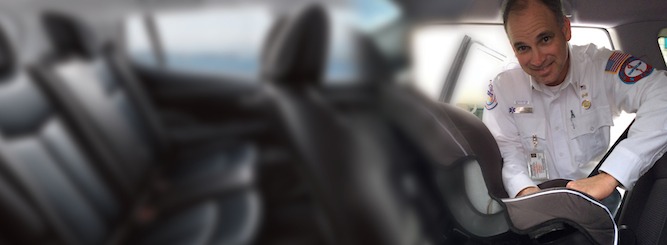A new car seat law in Florida extends the child passenger safety restraint requirements from children younger than 4 years old to every child under the age of 6. The change on January 1, 2015 is aimed at keeping more kids safe and lowering Florida’s rank as the sate with the highest car accident-related injury and fatality rates for children in the 4 to 10 age group.
In June 2014, Governor Scott signed House Bill 225 to increase the age of children required to be in a car seat or booster seat while in the car. Effective January 1, 2015, any child under the age of 6 must be restrained in a car seat or booster seat.
While the law outlines when a child must be in a car seat or booster, the type of seat depends the individual child’s height and weight. The National Highway Traffic Safety Administration provides a Car Seat Finder that uses a child’s birthday, weight and height to recommend the best seats for that child. The chart below outlines the age-based guidelines.
 Children under the age of 2 should always be transported in a rear-facing car seat. It’s the safest option for a child, and parents should use a rear-facing car seat as long as possible. Transition to a forward-facing car seat when the rear-facing car seat’s height and weight limit set by the manufacturer has been exceeded.
Children under the age of 2 should always be transported in a rear-facing car seat. It’s the safest option for a child, and parents should use a rear-facing car seat as long as possible. Transition to a forward-facing car seat when the rear-facing car seat’s height and weight limit set by the manufacturer has been exceeded.
The move from a car seat to a booster seat is based on a child’s height and weight, but maturity can also be a factor. A booster seat helps the vehicle’s seat belt fit properly, and booster seats don’t have a harness like car seats do. The child must be able to understand that they have stay in the booster seat and keep the seat belt buckled.
Seat belts are designed to protect adults with a medium build, which does not often match the size of young children. Children should stay in a booster seat until they are taller than 4 feet 9 inches and weigh more than 80 pounds. Check the fit of a seat belt – correctly positioned, the lap belt should sit across the upper thighs, not the stomach, and the shoulder belt should cross the chest, not the neck. Also, their feet must be able to lay flat on the floor. A seat belt that is improperly positioned can be ineffective in keeping a child restrained during a crash or cause internal injuries in an accident.
Read the full the full recommendations for car seat types based on a child’s age and weight on the National Highway Traffic Safety Administration’s website.



